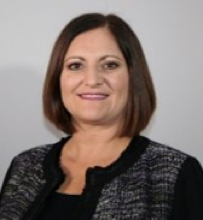In Romeo and Juliet, William Shakespeare wrote, “A rose by any other name would smell as sweet.” In his poetic fashion, Shakespeare was telling the audience that it was not the name or title that mattered, rather it was the essence of the person (or thing) that was important.
Too often, the term “in-plant” has become homogenized. It is used as a generic term for any organization-owned print operation. When we take a closer look, we see that in-plants have varied names, especially when broken out by vertical market.
Print-related departments are called many different things and provide specialized services depending on the business focus and culture of their organization.
| Colleges and Universities | HealthCare | Financial Services | Utilities and Telecom |
|---|---|---|---|
| Printing and Mailing Services |
Mail and Print Operations |
Mail, Print & Distribution |
Bill, Print & Distribution |
| Publication Services | Printing and Fulfillment Services |
Enterprise Utility Services |
Revenue Services |
| Campus Graphic Services |
Output Services | Statement Services | Billing & Payment Services |
| Visual Services | Corporate Services | Document Technology & Delivery |
Mailing Services |
| Copy Services/ Reproduction Services |
Billing Services | Corporate Services | Operations |
With all these names, what do in-plants do? As a consultant I continue to find a wide variety of applications and services being performed by several types of in-plant print facilities. The name of the department reflects how print and related services have evolved in their organization.
In many colleges and universities, the printing department functions like a small, commercial print shop with an ever-changing mix of print applications. They provide a full range of services including graphic design, web-to-print, distribution, bindery and mailing services. And they often have offset, digital and wide format capabilities. Many university in-plants support bulk mailings and First-Class Mail for several university departments. Sometimes the in-plant is connected to inbound and interoffice mail, sometimes not. Generally, in-plant print shops reports to Campus Services or Auxiliary Services.
In the healthcare industry most in-plant print facilities are within the insurance or “Payer” segment. Many hospitals and other “Provider” organizations have outsourced their print facilities. These in-plants are typically focused on printing transactional documents like EOBs, Summaries of Benefits, checks, ID Cards, and ANOC notices. Some in-plants also support the marketing departments with plan descriptions and other marketing materials. Healthcare in-plants usually report to IT, Operations or Communications.
Some of the largest in-plant print facilities are in the financial services and utilities verticals. Due to the high degree of regulation around customer communications, these in-plant print facilities are typically responsible for the transactional documents – statements, invoices, checks and customer notifications and mailings. Print for marketing departments are often outsourced to commercial printers or specialized service bureaus. Financial services and utility in-plants often report to IT, Operations, or the CFO.
In addition to the verticals described in Table 1 above, there are many in-plants in the non-profit sector that offer unique services for their organizations depending on if they are membership based or produce a sizeable number of publications. These factors often drive the type and overall volume of print applications. In the non-profit sector the in-plants provide services and value to their respective organizations beyond print.
OEM’s sales teams often approach all in-plants in a similar fashion. From an inkjet perspective the types of print applications and volumes are just the starting point for inkjet technology consideration. To be effective in selling to in-plant facilities, salespeople must understand what the in-plant does for their specific organization, and how the print services the in-plant provides are valued by their organization and, finally, where the in-plant fits from a reporting and P&L perspective.
While many in-plants in healthcare, financial services and utilities report to operations or IT, some report to the CFO. In my experience, operations and IT executives will evaluate the cost and benefits of new technology from a different perspective than a CFO.
In-plants in higher education may look like a commercial print shop; using complex chargeback processes to show revenue for their departments rather than just being viewed as an operational cost center. Often their reporting structure, through larger services departments, drives a distinct perspective when evaluating inkjet platforms and the cost considerations for new equipment.
In-plants must communicate their unique requirements in order to have an effective inkjet evaluation process. OEMs must comprehend the overall cost structure of each in-plant and how they account for their services from a P&L and chargeback perspective. With this knowledge the OEM team can hone their approach to the benefits of new inkjet solutions and present the cost analysis in a meaningful way for each prospect.
In-plants vary widely in the types of services they provide beyond print. In-plants also vary widely in how they are measured within their organizations from a cost and value perspective. OEMs can be more effective when selling to in-plants if they have done the research and relationship work to fully comprehend the context of the in-plant to the organization it serves, beyond the volume and variety of what they print.
 Lois Ritarossi is the President of High Rock Strategies, an independent management consulting firm focused on sales and marketing strategies, and business growth for firms in the print, mail and communication sectors.
Lois Ritarossi is the President of High Rock Strategies, an independent management consulting firm focused on sales and marketing strategies, and business growth for firms in the print, mail and communication sectors.

